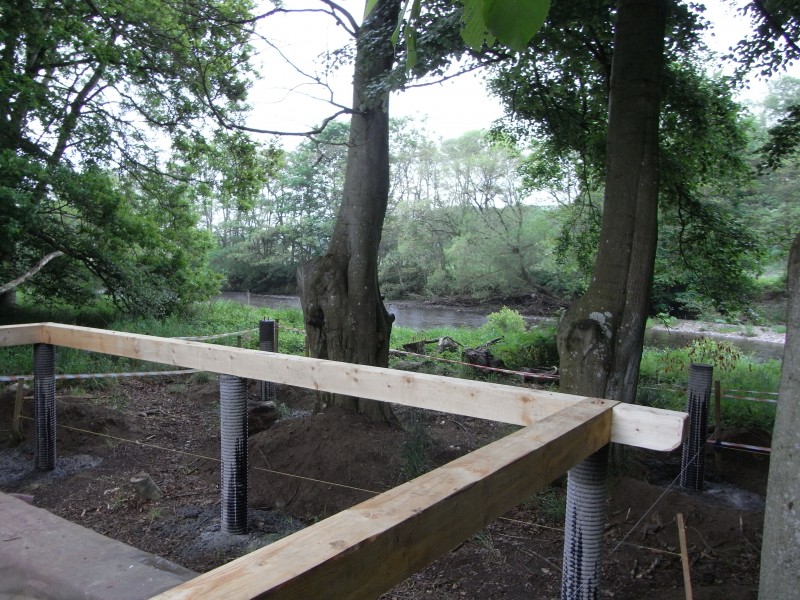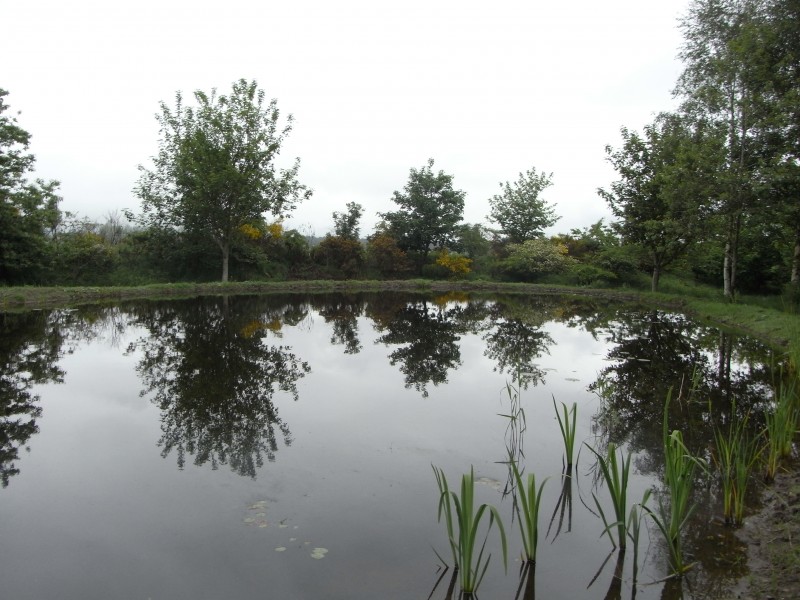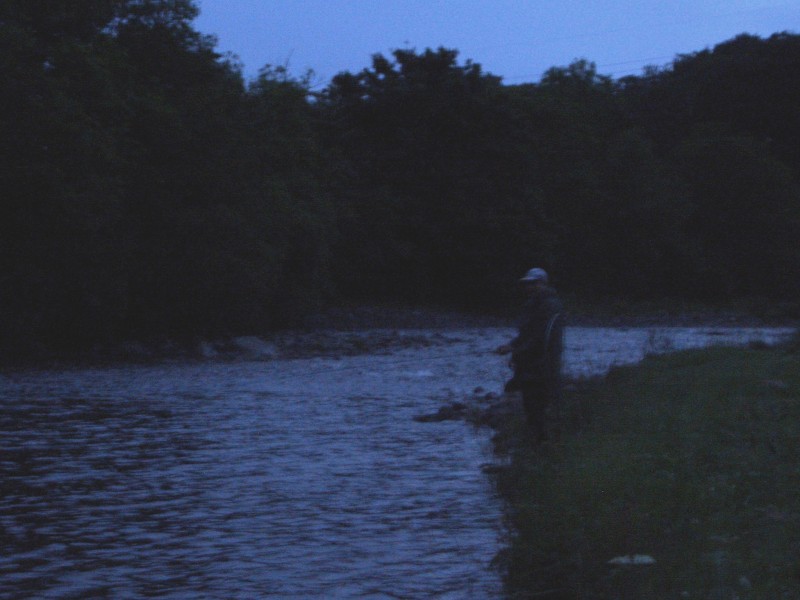
Castle Beat Fishing Hut under construction
Our plans to transform David’s Wood on the north bank of Pheasantry into a place of tranquility for people and wildlife are now progressing quickly. Our master craftsman, Will Wells, has completed the foundations in preparation for the arrival of the frame of the hut itself and its Scottish larch roof shingles. When finished, the view from the veranda – with beech trees growing through its roof – will look down on the delightful streamy flow of Pheasantry Pool and across to the high Red Brae bank with the sharp edge of the old vitrified fort of Finavon Hill as the backdrop. This place is the heart of the Finavon Castle Water experience, but then so are the three other huts’ locations! (Red Brae south, Harry’s Bar south and Indies north). There is something very special about David’s Wood which I am sure will be appreciated by our visitors. History, privacy and tranquility, not to mention some good fishing when conditions are right, combine to make this a uniquely relaxing place to be.
Close by the tree-house hut is our new wildlife pond (see below). Already, after only a month, we have seen water beetles, boatmen and a profusion of other invertebrates. With the native lilies, reeds, flags and rushes all settling in well, and with a happy family of mallards already thinking about making the pond one of their regular residences, we have exceeded our own expectations by a considerable margin. We will try to keep the pool fish-free (there being more than enough in the river!) but the likelihood is that minnows, sticklebacks and eels, along with frogs, toads and newts, will soon colonise this most lovely woodland pool.

New pond for amphibians, invertebrates and ducks
Building the pond presented us with a challenge because the soil along the S Esk river banks is very porous, necessitating some sort of water-holding liner. We went for the very best on the market, in the form of Bentomat, which is a smart form of clay liner. The key ingredient is bentonite which is volcanic ash that fell into lakes (or the sea, but that’s a different chemical compound) and through millions of years formed a clay-based sedimentary rock which when mined (in Australia and other places) produces a fine white powder. When water is added to bentonite it expands massively and makes a gooey clay layer. the Bentomat product is simply bentonite sandwiched between two layers of very tough, synthetic, non-woven fabric. With a sprinkling of bentonite powder between each overlap and each 5m strip of bentomat laid to cover the prepared pond area (with the spoil providing hard standing for the new vehicle track all the way up the N bank to Pheasantry), we now have a stable pond that holds its water level extraordinarily well, and which has become an important focus for wildlife. It certainly adds a new dimension to the Castle Beat experience!
TA


